







Everyone















To advertise in The Landy, call our team on 01283 742969

We’re on Facebook: www.facebook.com/thelandyuk









Everyone















To advertise in The Landy, call our team on 01283 742969

We’re on Facebook: www.facebook.com/thelandyuk
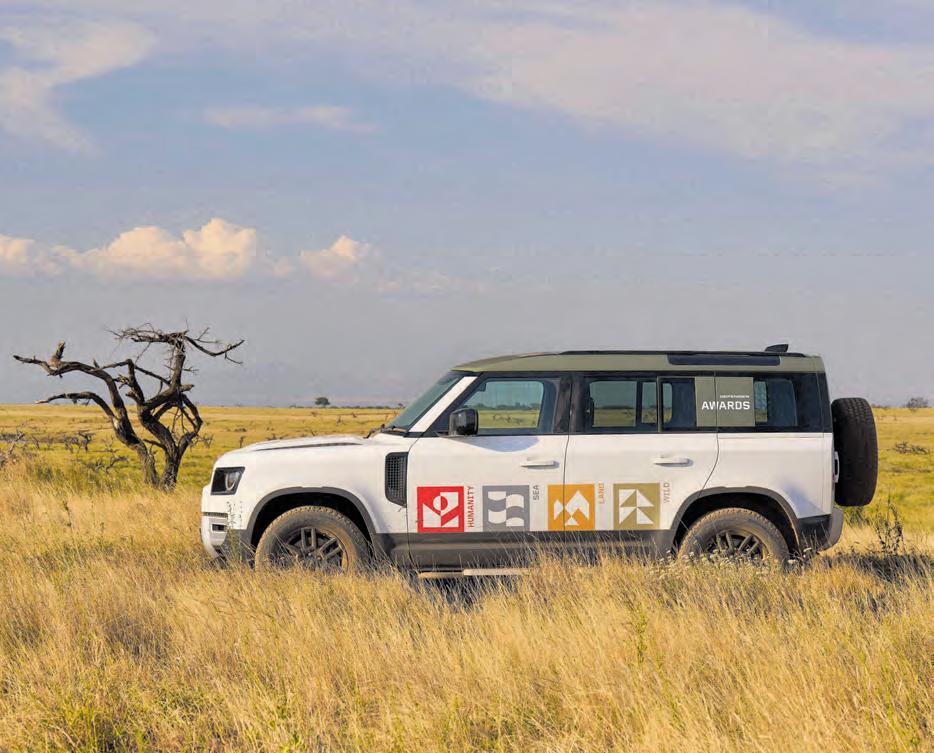
LAND ROVER HAS ANNOUNCED THE DEFENDER AWARDS – a new initiative which will see a £100,000 bursary, a Defender vehicle and expert mentorship donated to a chosen small conservation or humanitarian organisation in each of seven countries around the world – the UK, France, Germany, Italy, Australia, Japan and South Africa. Not the USA, then…
The chosen charities will be those which can make good use of their vehicle’s ability to ‘support vital, frontline work in hard-to-reach locations.’
Entries are currently being invited from programmes whose work falls into one of four categories:
• Defenders of the Wild: For projects committed to helping protect endangered and at-risk species, whatever their size. The mission is to help protect indigenous species of all kinds
• Defenders of Humanity: For projects which support people and communities in their time of need. The mission is to help vulnerable communities thrive – and to help them prepare for, respond to and recover from crises, whenever and wherever they strike

• Defenders of the Land: For projects dedicated to protecting important ecosystems. The mission is to help protect and rewild some of the world’s most fragile landscapes
• Defenders of the Sea: For projects supporting marine and coastal species, and the ecosystems upon which they rely. The mission is to address the many challenges affecting sea life and coastal communities, from water pollution to unsustainable fishing practices
Running over two years, the programme was conceived to support small-scale charities and non-profit organisations (that is, those with annual revenue of less than £500,000) that work on humanitarian and conservation projects at a local level.
‘Defender has a proud heritage of helping people make more of their world, spanning both humanitarian and conservation causes,’ said Defender MD Mark Cameron. ‘Our enduring 70-year association with the Red Cross and 20 years of work with Tusk support established organisations – but we wanted a way of engaging with smaller-scale initiatives.
‘We have launched Defender Awards to recognise and support conservation and humanitarian heroes. Our new programme represents an investment of more than £1m and will assemble an international network of experts to share knowledge and help advance change. It is international in scale but has a local focus and will enrich Defender’s history of supporting vulnerable habitats, species and communities.’
The initiative coincides with Defender’s Rhino Whisperer advertising campaign, which celebrates the brand’s 20-year relationship with Tusk protecting endangered species in Africa. ‘Our partnership with Defender goes from strength to strength and many of our project partners have been relying on Defenders to support their operations for more than 20 years,’ said Tusk founder and President Charlie Mayhew. ‘The new Defender Awards initiative represents a valuable opportunity for smaller organisations to begin their own relationships – and benefit from additional funding and expertise, as well as the 4x4 capability that is associated with Defender.”






140: June 2025





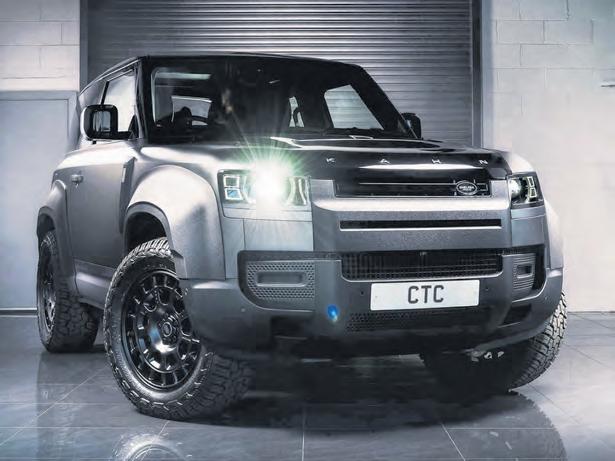
You know what you’re getting from Kahn Design. The latest creation from the Bradford styling house, which is now available through its Chelsea Truck Company operation, is a ‘bold fusion of heritage and innovation’ named the Defender 90 Concept 001.








it in spaced out lettering where Land Rover saw fit to put the word ‘Defender’. People will thus be able to see you coming in your bold fusion of heritage and innovation and say ‘what a Kahn’ to each other.
The bonnet is gloss black, while the rest of the vehicle is finished in Volcanic Rock Satin (which looks like grey to us). Colour-matched side vents with CTC plaques display the vehicle’s Kahn identity – a detail which, as if to prove Land Rover itself doesn’t have a monopoly on the word, the company describes as being ‘meticulously curated’. Inside, black leather cabin trim is adorned with Britannia blue piping and extended upholstery accents.
of 33x12.50R20 Yokohama Geolandar X-AT all-terrains. Flared wheelarches keep them covered, giving the vehicle a wide-boy stance that’s somewhat reminiscent of Suzuki Vitaras in the early 1990s.






This is a one-off prototype designed to act as a showcase for the company’s designs. Kahn describes it as ‘a visionary reinterpretation of the legendary Defender, blending British tradition with avant-garde styling and technical mastery.’ It previews various accessories which the company will offer for sale in the future.
These include Kahn’s newly announced 20” Hammerhead RSForged wheels, around which is a set
Further features include carbon fibre rear diffuser spats, facelifted headlamps and a Kahn branded rigid spare wheel cover. The grille surround, arches and lower body are finished in 3D-textured protective paint, ‘combining resilience with a rugged yet refined finish’ – we don’t know if this is actual Raptor, but that’s the word everyone uses for this kind of paint and the rough-textured look and feel of it will be instantly recognisable.
So too is its lightweight, vented bonnet, which has a Kahn badge across
Although the Defender 90 Concept 001 is a one-of-a-kind prototype, the exterior conversion is also available to buy. Just the exterior, mind, though if black and blue leather with Chelsea Truck Company monograms doesn’t get your blood pumping that may be no bad thing. The price of driving a vehicle which ‘stands as a testament to automotive ingenuity, where bold individuality, innovation and peerless craftsmanship unite’ (and says Kahn on the bonnet) is an all-in £25,000.




Delivering mud terrain performance with all-terrain manners
CF9000 RUGGED TERRAIN
• Anidealfitmentforworking and leisure conditions
•Sidewall design enhances the extra climbing ability
•Pattern design reduces road noise
•Optimised tread design increases wear and puncture resistance

WORKING IN COLLABORATION WITH CALIFORNIA-BASED INNOVATION DESIGN STUDIO NUOVA, WHICH CREATES ‘IMMERSIVE SPATIAL PERFORMANCES,’ RANGE ROVER HAS UNVEILED ITS FIRST LANDMARK INSTALLATION AT MILAN DESIGN WEEK.
Called Futurespective: Connected Worlds, the installation is ‘a dynamic experience that transports visitors between two time portals.’ It was presented in the magnificent surroundings of Milan’s 18th Century Palazzo Belgioioso.
Normally we try to write things in our own words, what with that being our job and all. But how can we improve on this paragraph from JLR’s press release? ‘Together with Range Rover’s in-house creative team, NUOVA visually narrates Range Rover’s design lineage and enduring influence on modern luxury through a cinematic journey across the two distinct eras, from 1970 to 2025. A multi-sensory experience, the interiors include bespoke furniture and soundscapes alongside custom scents by Aeir, NUOVA’s carbon negative luxury fragrance brand, all designed exclusively for Range Rover.’ Springs, shocks. A high-angle A-frame ball joint. The sound of a V8. The smell of diff oil. Hold on to these things and keep your sanity as the world around you is losing its own.
So what did this thing actually look like? A 25-metre monolith in the centre of the piazza, adorned with a gold Range Rover motif, ‘signals the entrance for time travel.’ Good grief.
So you walk in and there’s YVB 151H, the first pre-production Range Rover, sitting in a 1970-style car showroom with wooden panels, an oxblood red sofa and a white marble table and chairs. Details like a fish tank, original sketches and period artefacts add to the effect, while music plays through a chrome-plated speaker (called Dorothy, for some reason) and a fragrance called Grand Rose wafts around the place. There was even a ‘time travel’ concierge dressed in an outfit inspired by 1970s workwear and British fashion.
From here, visitors moved through to a second capsule centred on a current Range Rover Autobiography. This was ‘a future-looking ethereal space with a prismatic light box interior lined with vertical mirror pillars, acting as symbols for strings of time.’ You know, those. ‘The interplay between the two cars and spaces is a symbol of the brand’s informed evolution and identity,’ says JLR, adding that the second capsule ‘offers a moment of reflection, with ambient sounds and a custom cool Wet Stone scent filling the space.’
Futurespective: Connected Worlds ran from 8-11 April. No, not the 1st. We did check – and yes, this was actually real.


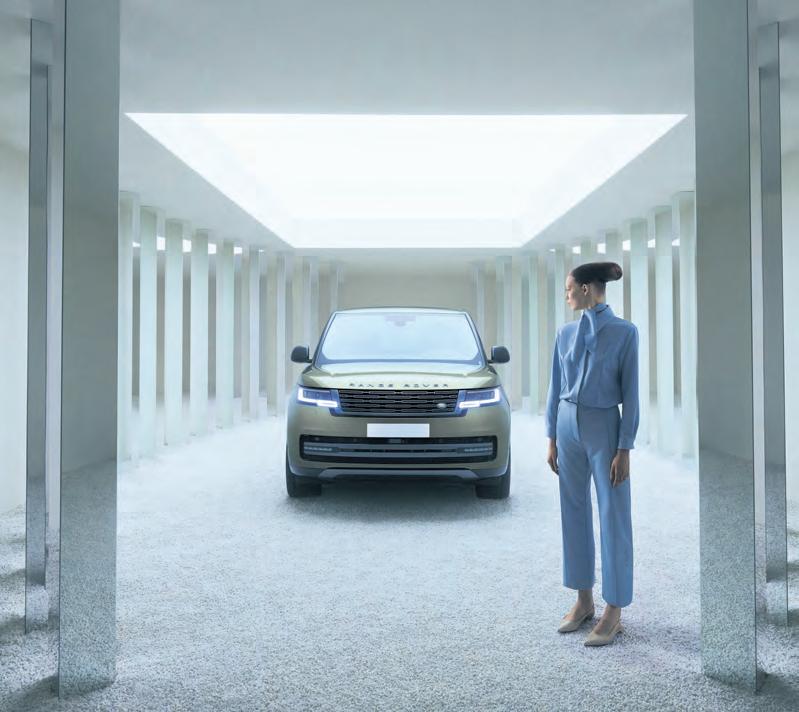






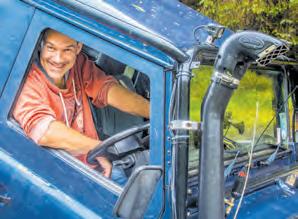
Range Rover launched its first fashion collection a couple of months ago. Everything cost the sort of money only a Range Rover customer could afford, but this was more than just merch. It was a statement. They called it a ‘lifestyle capsule’ – which, in a manner of speaking, is exactly what the vehicle itself has become.
Now, they’ve started dabbling in installation art as a way of promoting the vehicle. It’s no longer enough for the Range Rover to be a mere car: now, the brand is at the centre of a whole way of (luxury) life.
As old-school Land Rover fans, it’s almost impossible not to laugh at the sheer pretentious nonsense of it all. But does JLR have a point with all this? That much-maligned Jaguar rebrand lit a fire under the company, after all – and while many people absolutely hated it, the ones who JLR are actually going after thought it looked great.
Your instinct is probably to hate all this high fashion stuff. It’s a long way from the Range Rovers that made the name great, for sure. They had character: what does a new one have?
The answer may well be: character, actually. And the arty nonsense may be where it comes from.
Like it or not, cars are changing. The way they look, the way they work, the way we own them, the way we drive them. Cars are becoming drivable tech and before long they’ll be doing the driving for you. Everything that used to give a car character will be gone: it will have to come from somewhere else.
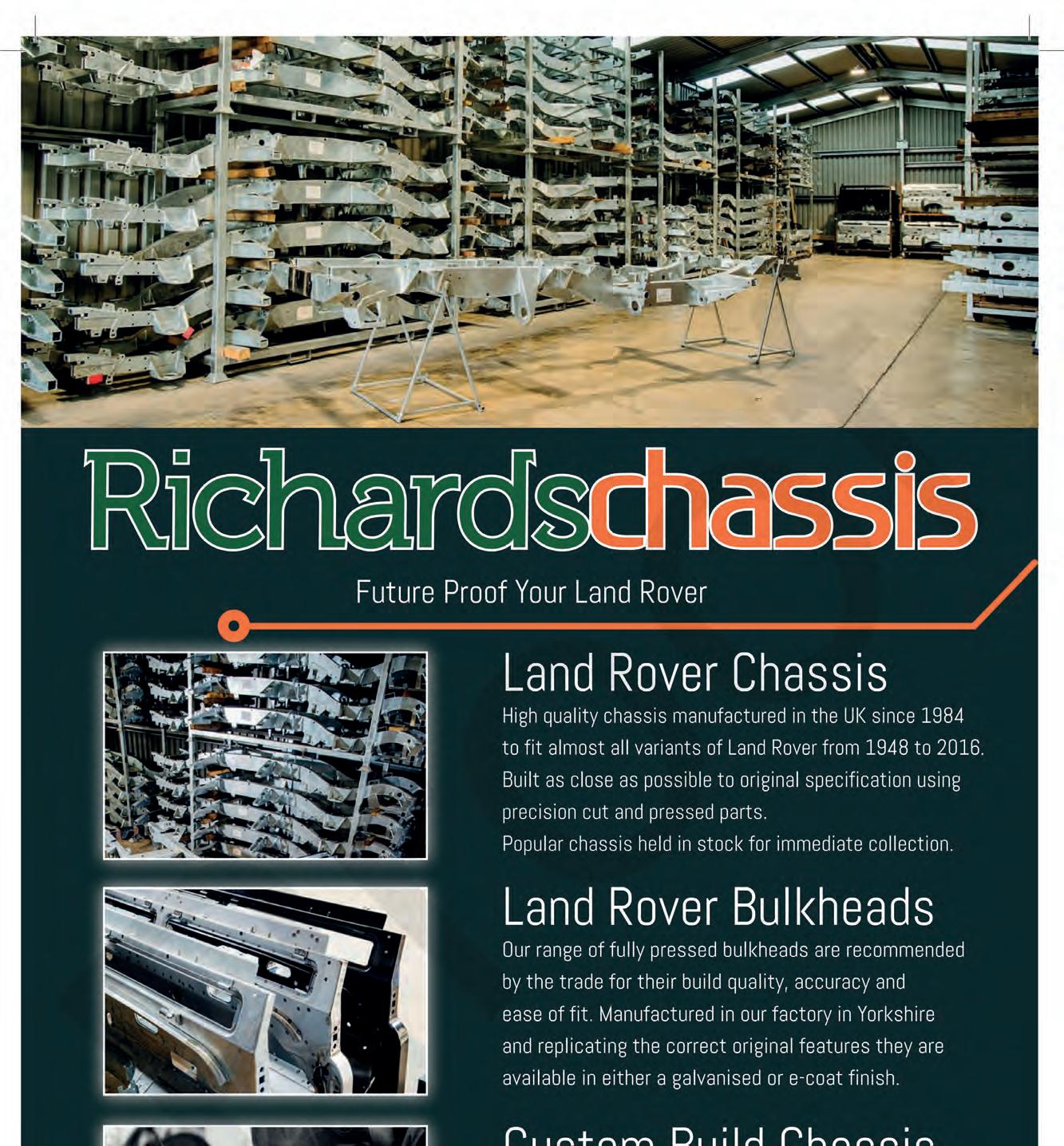
The high fashion, high art thing might seem ludicrous, but for a luxury brand like Range Rover it’s actually a shoe-in. Car makers need to find more ways of making money out of what they do –and rebuilding their brands as holistic lifestyle centres makes complete sense.
Like you, I suspect, I’m quite pleased that Range Rovers and their like are still around from back before all this. Style never goes out of fashion, as they say. And those classic Landies will still be around long after the latest craze in poshness has become old and tired.
Alan Kidd, Group Editor alan.kidd@assignment-media.co.uk








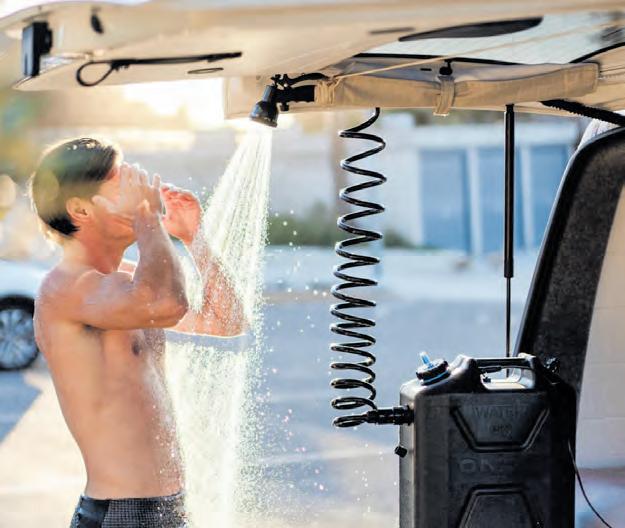




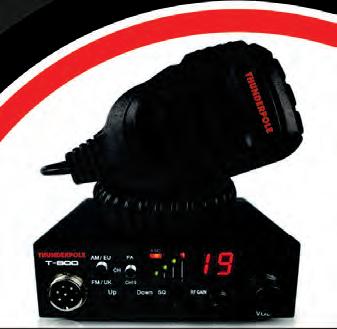





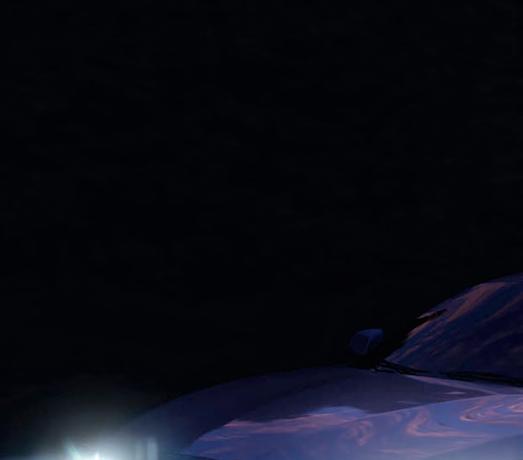









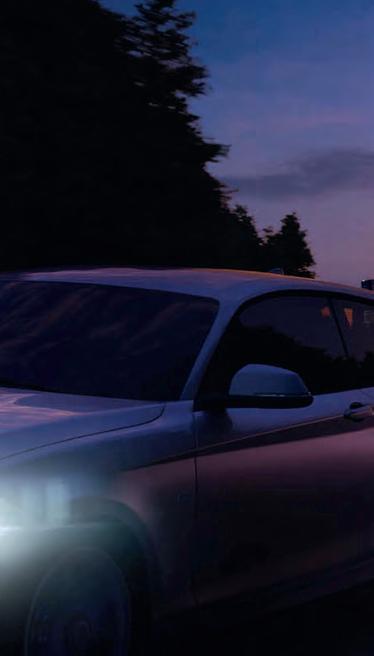




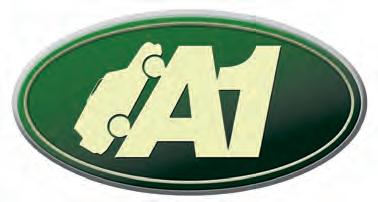
IF YOU DRIVE A NEW-SHAPE DEFENDER AND YOU WANT TO FIT A WINCH ON IT, the options are quite limited and tend to be very expensive. You’re not going to get a lot of sympathy for the latter, given that you can actually afford a new-shape Defender, but either way the good news is that for us normal people who drive proper ones, there’s a wide variety of outstanding options available for heavy-duty winch bumpers.
Even more outstanding is the fact that they tend to cost a fraction of the money, and they take half an hour to fit rather than a couple of days. Anyway, to keep up with the theme of general outstandingness, Rimmer Bros currently has something like nine different designs either in stock or a phone call to a supplier away.
You’re looking at less than £250 (plus VAT, admittedly) for the entry-level bumper in the Rimmer range. Up top, Terrafirma’s Pro Taper unit costs less than double that, and there’s a whole lot of alternatives in between including tubular and galvanised options. There are various bolt patterns for the winch mounts, too, as well as flat and tapered ends and choices with and without A-bars. You can browse the full range at rimmerbros.com.






Great looks, great light from Osram’s curved
Price: £289.99 Available from: www.osram.co.uk
ONE OF THE BASIC RULES IN LIFE is that things which have curves are more fun than things that don’t. Roads come to mind. As do bananas. And Alexis Texas.
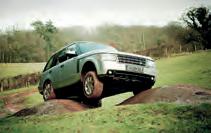
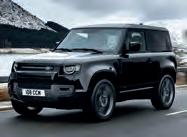


If you can get the image of those last two examples out of your mind for a moment (take your time, we’ll wait), another very fine curvy thing is the new VX1000-CB SR SM from Osram. It’s not as memorable a name as Alexis Texas but she doesn’t have 7650 effective lumens from 36 high-performance Osram LEDs providing exceptional visibility at a range of up to 525 metres, does she?
The VX1000-CB SR SM is a 44-inch curved light bar with a combination beam designed to provide both far-field and near-field illumination. Capable of use with 12v and 24v vehicles alike, it has an unbreakable polycarbonate lens and a single-row array contained in a robust aluminium die-cast housing.
The bar is supplied with brackets allowing for versatile mounting options on various parts of your vehicle – including curved surfaces like bumpers, grilles and windscreens. Once in place, you can leave it forever or, if you prefer, move it to other suitable locations.
Either way, the slimline layout and curved design promises a sleek and modern look – and Osram promises that even in dim light and reduced visibility, its output of up to 6000 Kelvin can provide lighting conditions similar to daylight. Just don’t stare at it for too long or you might go blind. Finally, something else it has in common with Alexis Texas.




Part NumberDescription Details
TF972 Roof Rack 2.2 x 1.0m / Steel Tubular
TF973 Rear Door Access Ladder Discovery 3 / Discovery 4
TF1714 Terradactyl 2/5 LED Awning 2.0m / 270 degrees / 5 Wing
TF1740 Portable Power Station500w Output
TF1741 Power Panel 100w / 2 section solar panel
TF1722 Camping Table 70 x 70cm / Aluminium
TF1720 Camping Chair Heavy Duty / With storage bag
TF1721 Marshal Stool Folds flat for storage
TF1211 Water Bottle 660ml / Stainless Steel
TF1212 Travel Mug 600ml / Stainless Steel
TF1213 Water Bottle CarrierInsulated / With Shoulder Strap
TF1730 Fire Pit Stainless Steel
TF1726 Expedition Shovel 1.3m handle
TF795R Dry bag 80 Litre
TF794B Dry bag 10 Litre
TF902 Expedition Storage Box 160 Litre Capacity
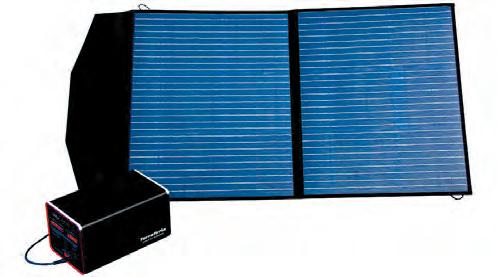

Whether you’re embarking on an off-road expedition or packing up the kids for a summer camping trip in your Land Rover, having the right gear makes all the difference.
Prepare for your next camping adventure with high-quality, purpose-built gear that ensures a smooth and stress-free experience—wherever the road takes you!

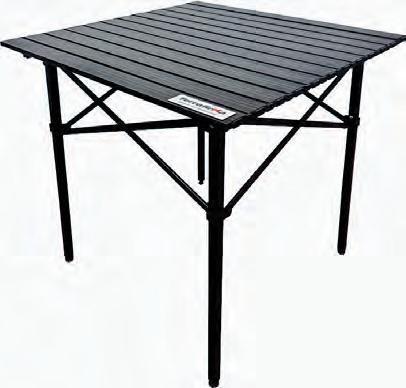


Price: £44.00 | Available from: stitchandrivet.co.uk
IF YOU’VE FINALLY RUN OUT OF THINGS TO BUY FOR YOUR LAND ROVER, maybe that’s nature’s way of telling you to buy something for yourself now. In which case, what could be better than a hoodie with anything you want on it? Like a picture of the aforementioned Land Rover, obviously. Enter stage left Northamptonshire company Stitch and Rivet, whose premium hoodies are available in all the usual sizes and a choice of four colours. But that’s just the beginning. Having chosen those things, you’re then into a vast array of embroidered badge options covering more Land Rovers than you know what to do with (Series, Defender, Discovery 1 and new 110) plus your choice of body, roof, rim and mudguard colours.

The hoodies themselves are made from 85% organic combed cotton and 15% recycled polyester, and come with a double-layered hood and front kangaroo pouch. The hems are ribbed and the draw cords are finished with metal tips. They’re suitable for vegans, too, and certified by the Fairwear Foundation and Oeko-Tex.
Got a 101, or a Cuthbertson or Centaur or something like that? Not a problem. If the company’s pre-made embroidery options don’t float your boat, give them a shout and they’ll talk to you about doing something completely bespoke.
SINCE YOU’RE ABOUT TO HEAD FOR STITCH AND RIVET’S WEBSITE with a burning desire to equip yourself with a hoodie bearing the image of your own Land Rover, we’d better get on with it and tell you that the company also does matching headwear. The company offers a choice of 5-Panel caps in two designs for adults, plus a smaller one for kids.
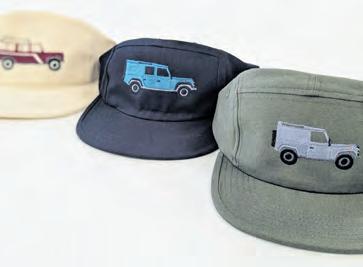
The caps are manufactured from cotton canvas and, like the hoodies, are available in a variety of colours. On top of that, the all-important Land Rover badge on the peak can feature any one of a truly enormous range of models in an even more enormous range of colours, and once again you also get to choose your roof, rim and mudguard preferences. Again, a fully bespoke service is also available if the range on offer doesn’t include the likeness of your own personal chariot. Sitch and Rivet is a good, unpretentious British family business which makes cool stuff and looks after its customers the way you want to be looked after. We like their style.

































To advertise in The Landy, call our team on 01283 742969

We’re on Facebook: www.facebook.com/thelandyuk

Restored as a barn find some 30 years ago, this late 80” Series I was then put in another barn… and came out two decades later ready to be restored all over again
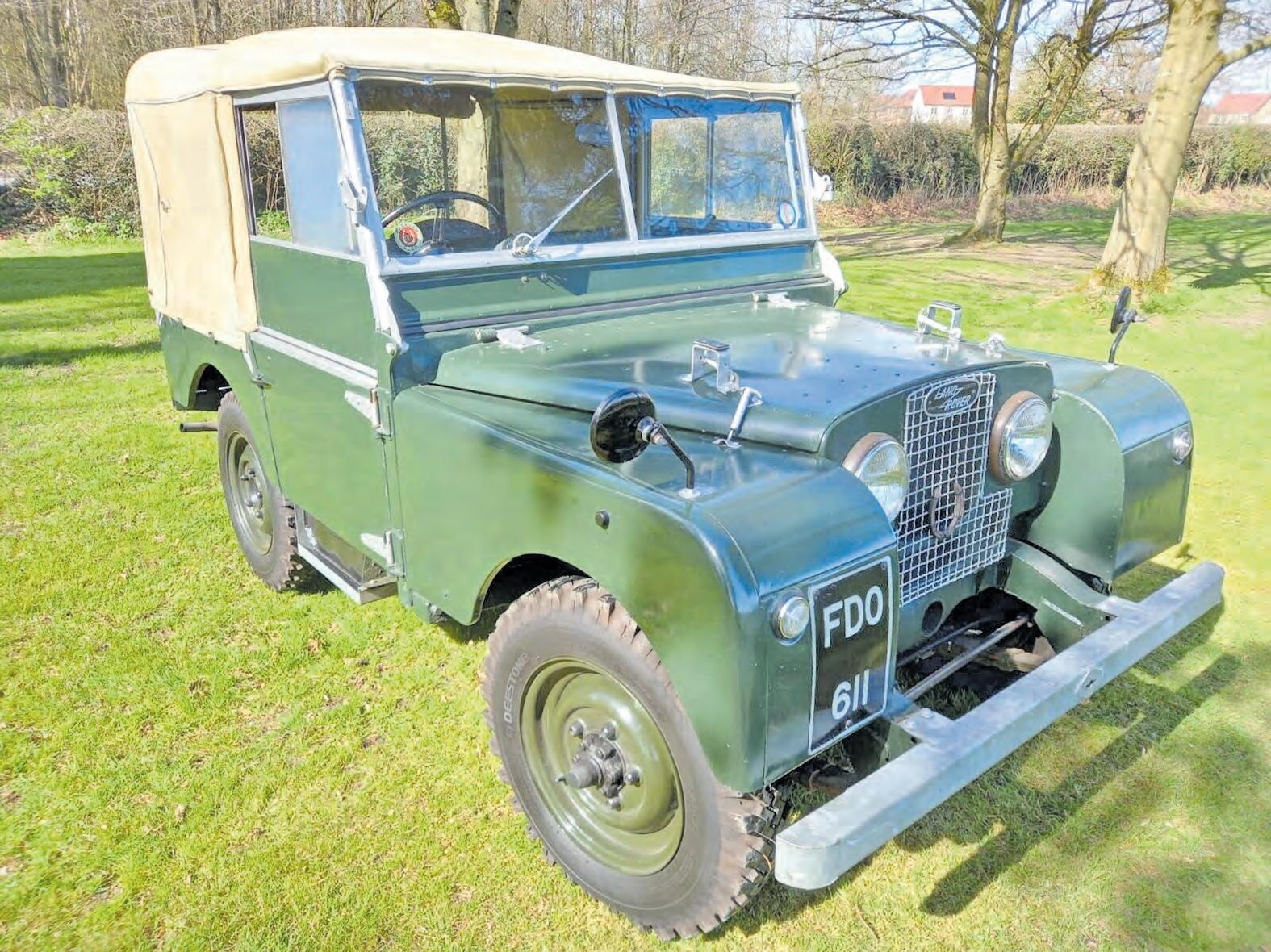
There’s nothing quite like a good barn find story. The idea of some wonderful old piece of motoring history lying forgotten about, somewhere out of sight, out of mind, waiting for year after year, decade after decade
to be discovered and brought back to its former glory… well, it’s the perfect automotive tale, really.
Of course, old Land Rovers are a particularly fertile area for barn finds because so many of them spent their

working lives in and around barns. And because they’re the coolest classics in existence, obviously. So this here Series I is doubly cool – because it’s been a barn find not once but twice. The full timeline is a little unclear. But it starts in February 1953, when FDO 611 (‘Fido,’ as she’s known to her owner Matt Gater) was first registered. She’s a very late 80, from just a few months before the short-lived move to an 86” wheelbase, with the 2.0-litre Siamese-bore petrol engine that had been introduced the previous year. What we know is that back when John Major was a fresh face in Number 10, the Channel Tunnel was still being built, everyone was listening to Nirvana and nobody had heard of the internet, Fido celebrated her 40th birthday with a restoration. We don’t know what
state she was in but Matt says it was a proper, no-stone-unturned sort of a job. One of the first, you’d have to say, because even then people were still cutting them up and turning them into triallers. The realisation that Series Is were getting scarce was just about starting to kick in, but it was still cheaper to plonk one on top of an axed Range Rover chassis than buy a 90 so that’s what a lot of people did. Perhaps whoever did the job back then recognised that with her original chassis, bulkhead, engine and axles all in place, Fido deserved better. She was, in Matt’s words, ‘fantastically restored’ with first class underpinnings and bodywork – though even then, back before most restorers had even heard of the word, they knew better than to paint over four decades of patina.

They also seemed to know better than to actually drive the Land Rover they had just spent all that time and money on.
What? I know, right? This bit has been lost to time too but at some point after the project was complete, and it would appear not to have been all that long, the 80 was laid back up in a barn and forgotten about once more.
A decade and a half later, in 2008, she was hauled on to a trailer and… moved to another barn. This time, she only languished for seven years, but by now it was knocking on for a quarter of a century since that previous resto and pretty much all she had done in that time was sit there, patiently waiting for someone to love her.
That someone was Matt. ‘We purchased it in 2015 from its then owner, a family friend who was wanting to sell off his vehicles due to age, as a genuine barn find’. The picture shows how she looked when found – dusty and kind of sad, but miles and miles better than most Land Rovers that have spent so long wanting for attention.
Nonetheless, there was plenty to be done. ‘Everything had deteriorated,’ says Matt. ‘The fuel tank, all the fuel system, the brakes and braking system, ignition, cooling – we set about recommissioning it, replacing all these parts while bringing it back to life.’
‘The rest cleaned up with a lot of work and effort. New Deestone Xtra Traction tyres with new inner tubes, a full service and oils and a full exhaust system.’ Sounds like recommissioning is the right word, rather than a full resto – the previous one had stood Fido in good stead and deep down she had survived those twentysomething years remarkably well.
In particular, her chassis shows no sign of rot – or, incredibly, of having been welded. It’s even in the correct green paint. ‘It looks and is perfect,’

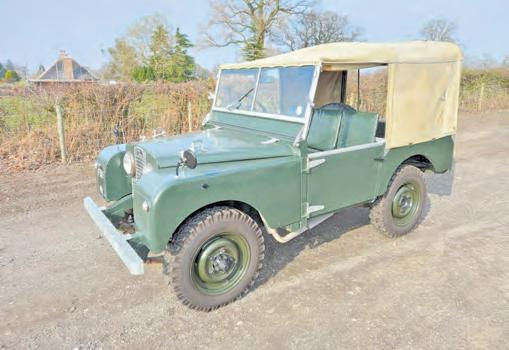
says Matt. There aren’t many Land Rovers you can say that about when they’re ten, let alone seventy.
The engine is that 2.0-litre unit from back when Churchill was still PM, sugar was still rationed and Everest was still unconquered. Painted eggshell blue, it’s standard in itself – though instead of the old dynamo, it’s running a Dynamator, maintaining the correct oldschool appearance under the bonnet but giving it reliable charging and lights you can actually see by.
On that subject, she’s fitted all-round with the correct Lucas glass lenses. Up front are the standard 7” headlights with incandescent bulbs and to the rear are the now rare ‘D’ lamps, while concealed indicators avoid spoiling her authentic appearance and mean other road users stand a chance of being able to see where she’s headed next.
Matt says Fido will cruise all day long with her ears pinned back at a heady 45mph and that her gearbox and transfer box work the way they would
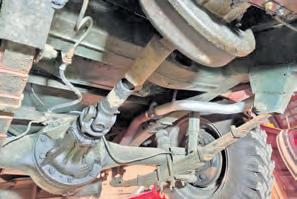
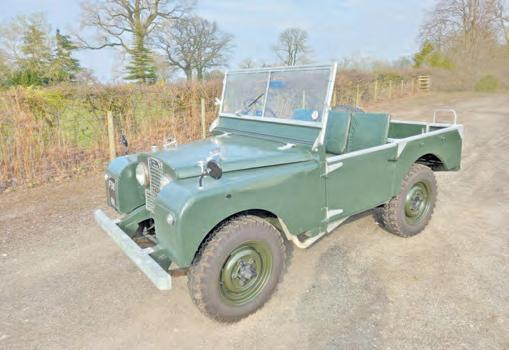
have when they left the factory, with smooth shifting up and down the ratios and between both high and low range and two and four-wheel drive. Sounds like it’s just nicely run in, really. Inside, she accommodates three abreast in original seats with horsehair stuffing; a minor bit of modernity comes in the shape of three-point seat belts, which can be unclipped if there’s a classic concourse scrutineer sniffing around. She’s from the days before belts were mandatory, of course, so no need to use them, though why anyone would choose not to is beyond us.
On the outside, as we mentioned earlier you’re not looking at one of those Series Is that are denuded of their character in pursuit of ‘originality.’
Matt describes her as having a ‘fancy farm’ look: ‘the bodywork is good and tidy,’ he says, ‘not perfect but ruggedly super tidy while still useable rather than showroom shiny.
‘It would look very much at home outside a country pub or in a village

So much about Fido is ‘right’ – everything’s original and correct, all the way down to the paint on the chassis… and the 1947 David Brown Cropmaster she shares a barn with, indeed. In the cabin, the dashboard hasn’t been modernised into something ugly and needless, and the horse-hair seats wear their patina extremely well. Matt describes her as having a ‘fancy farm’ appearance, which sounds a lot more appealing than anything Land Rover itself has said about its vehicles for about two decades

scene,’ Matt continues. ‘It looks just right anywhere!’
That’s with the nicely faded hood in place, the sides rolled up, the canvas, sticks and door tops removed or, if you’re really going for it, the windscreen folded flat to the bonnet. This last option is pretty much the coolest look on four wheels, and its enhanced by the fact that the screen surround is freshly galvanised – as are the body cappings and front bumper. It wouldn’t only ‘look just right’ anywhere – it would absolutely steal the show.
So after all that time spent sitting in barns, Fido is finally getting used regularly the way a Land Rover should. Right? Er, no. ‘We are lucky enough to have an 86” and an early Lightweight as well,’ says Matt. ‘So the little 80 just sits. It joined our collection in a warm, dry barn, which is where it has resided for the last ten years; it has literally been taken out two or three times a year for local runs and attended one car show in all of that time.’

You know where this is going. Matt will be moving in the near future and it’s going to be a trip not everything can come on. ‘It’s lovely to have but it would be great for it to have a new life where it gets some use and enjoyment.’
The answer to your next question is £21,500. To the one after that, it’s
Macclesfield, and if you’re still coming back with more it’s take a look in the classified ads on page 30 of this issue. People have been known to spend five times as much on a Series I – but even at that money, you’ll do well to get one that’s more original, and more charming, than this.






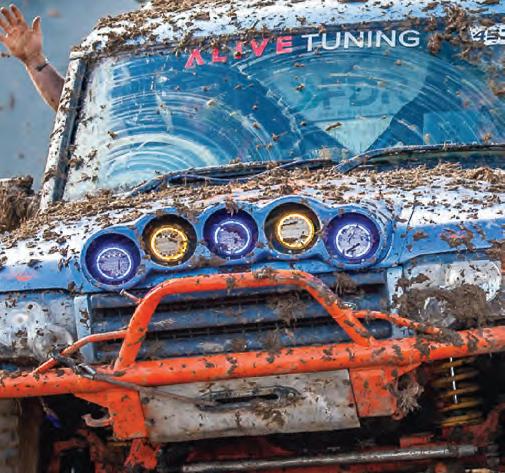

















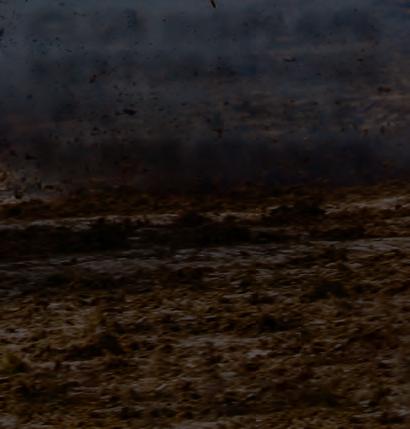



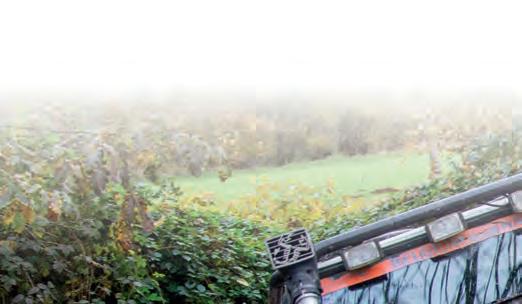












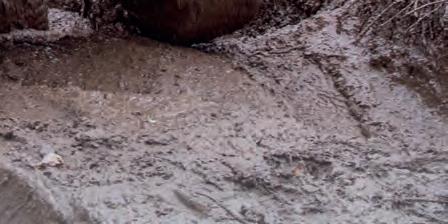





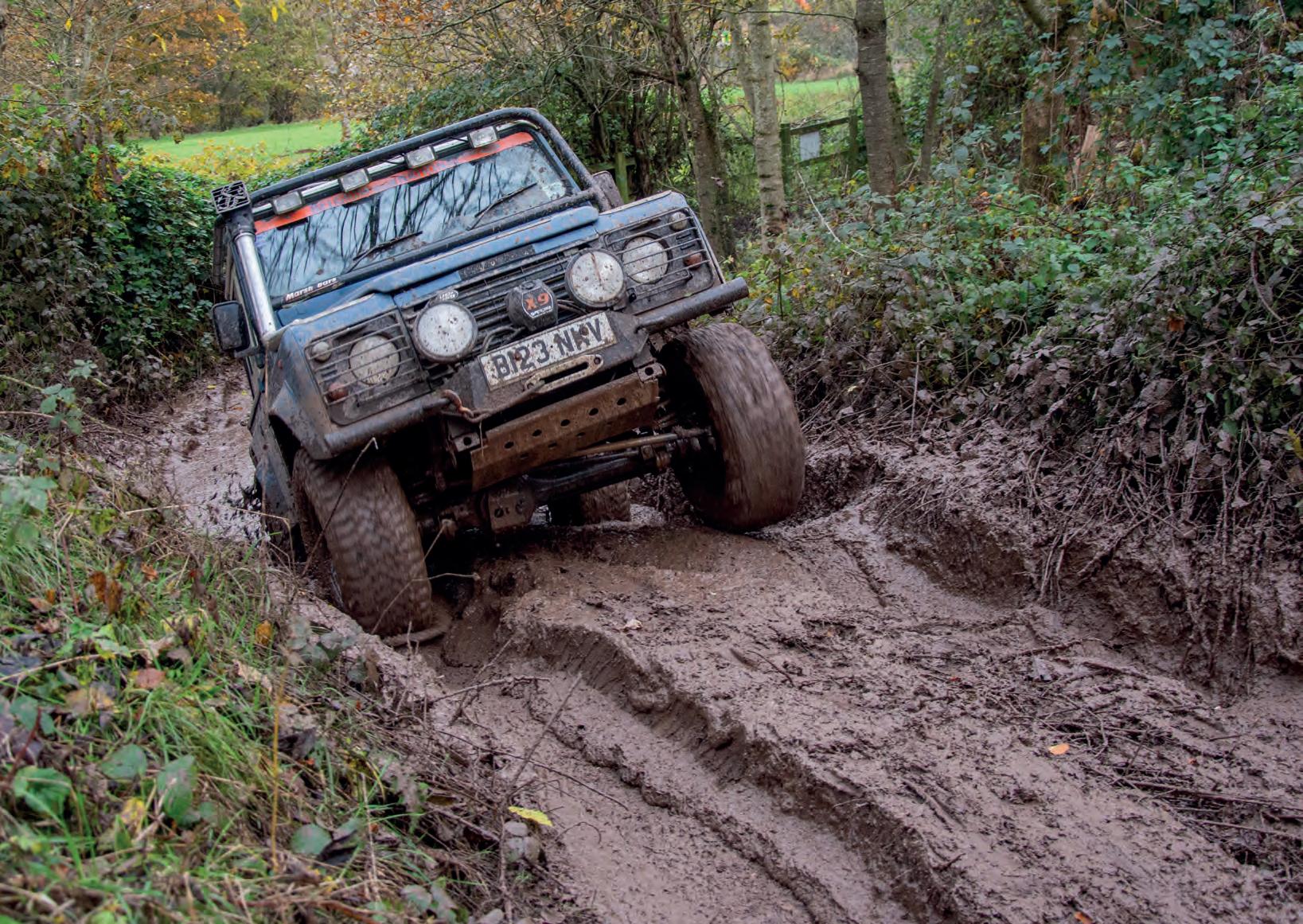






Land Rovers are returning to Newark Showground this August for a day filled with Land Rovers!
Exhibitors old and new will join us, selling everything from parts & accessories to tyres, clothing and toys Talk to overland adventure specialists about your next trip, discuss modification options with companies with the know-how and other experienced Land Rover owners.



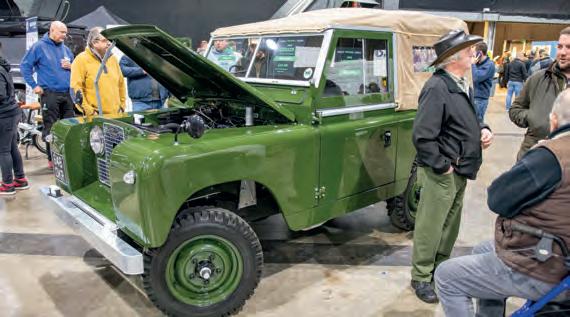
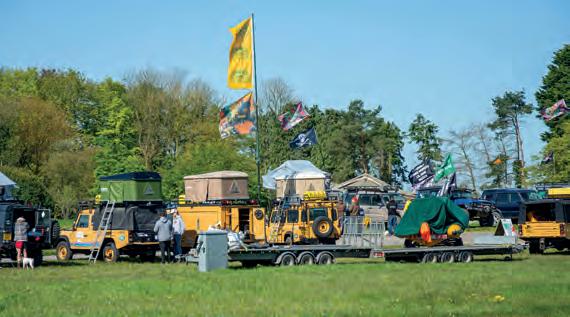


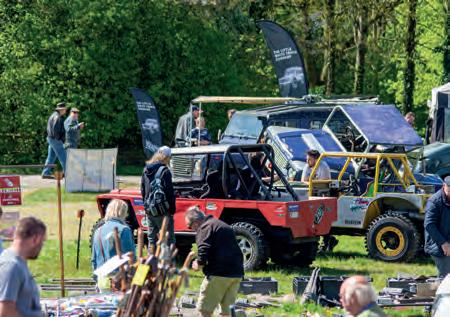
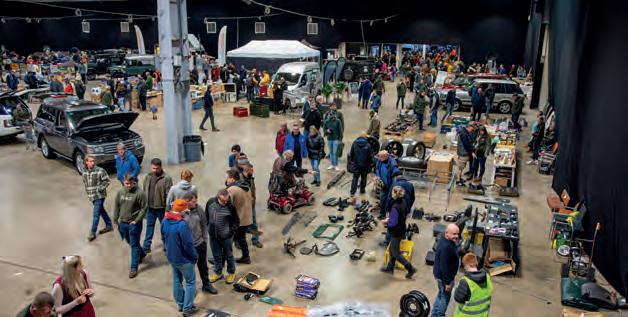








The Defender 130 camper we featured in last month’s issue was planned with a specific expedition in mind. So when its owners finally climbed aboard after shipping it to Africa, it felt like the beginning of something really big. As it was to turn out, however, something even bigger and better was just around the corner…
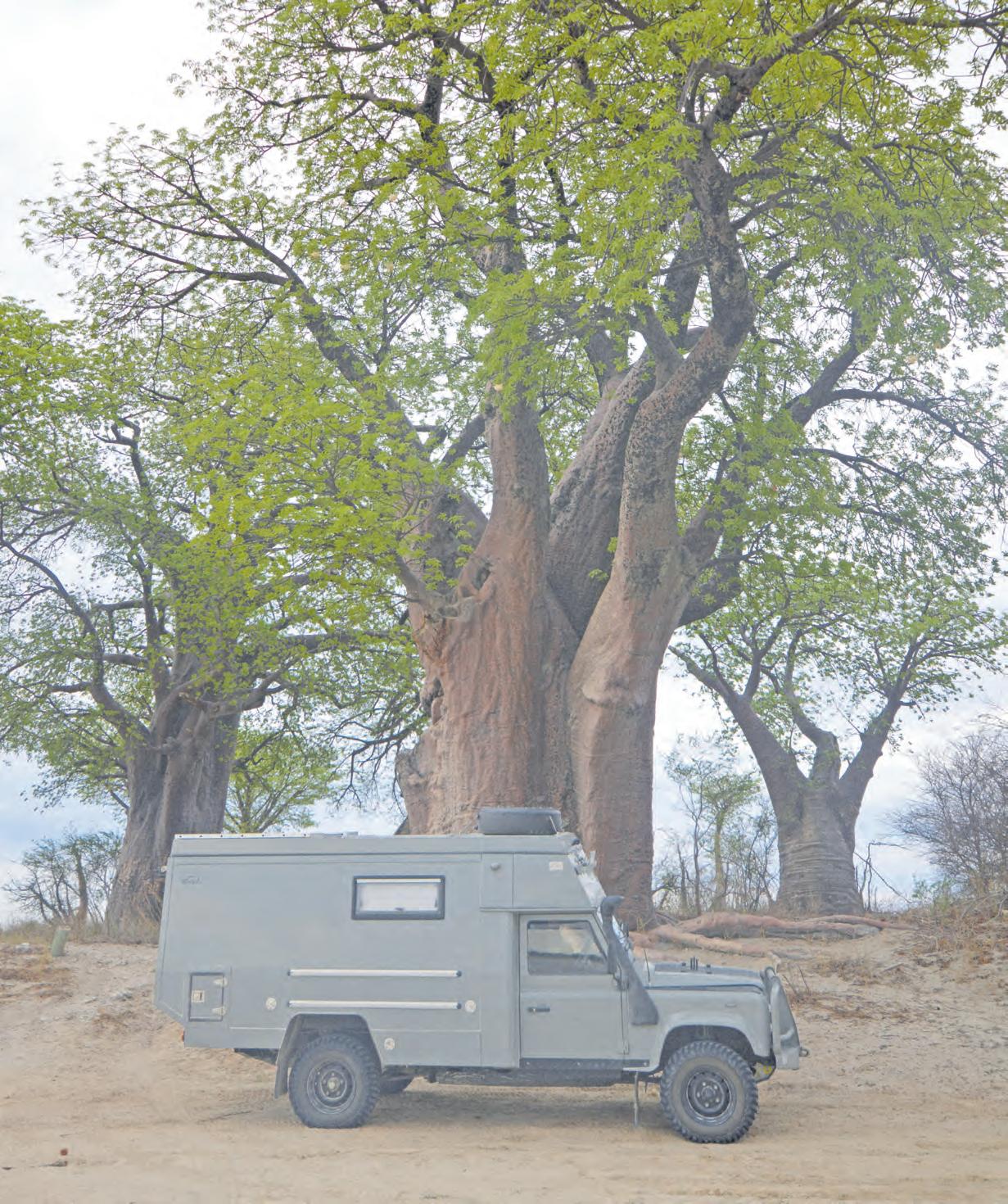
Last month’s issue of The Landy included a story on the build of my Land Rover Defender 130, an ex-utility vehicle which I rebuilt from the chassis up as a self-contained all-terrain motorhome with a bespoke habitation unit from Custom Campers in Germany. I had previous owned a 110 with a roof tent, in which my wife and I travelled extensively throughout Europe, but while this was a great vehicle it did teach us that preparing dinner in the pouring rain is not much fun – and that sometimes only a hot shower will do.
Europe is great but for many years, I had been dreaming of exploring Africa. So it seemed like the ideal plan – build the vehicle I really wanted, and use it to take the trip of a lifetime. Which is why, one October morning in Cape Town, you’d have found us rocking up at African Overlanders in a generic small white hire car.
They had taken care of shipping our 130, which had arrived in the port by the time we flew into town but was yet to clear customs. Not a problem, when your shipping agent even has accommodation for you in a rondeval (a traditional straw bale construction with a thatched roof), you’ve got a onestop shop for everything you need to take care of.
The following day was dedicated to some shopping around Cape Town for some of the essentials that we hadn’t been able to ship (like oil for the Land Rover), then the day after that we went to collect the 130 from the container. This is a nerve-wracking experience, but the truck was exactly as we had loaded it – you hear stories of rampant pilfering, but I get the feeling that anyone who opened the container doors and saw how tight a fit it was wouldn’t have fancied crawling along the floor to get to the front. Shipping the Land Rover was a very easy and efficient process, and we got it back with no damage. Naturally, there was a small celebration that evening in Cape Town, with a bottle of Irn Bru opened. There was further shopping to be done before we set off, as we needed supplies of food and wine to fill the 130’s fridges. We also decided to relocate the spare wheel back to the roof from the bonnet. This meant changing the roof struts again… however we had forgotten to pack the
To advertise in The Landy, call our team on 01283 742969

We’re on Facebook: www.facebook.com/thelandyuk

additional struts Custom Campers had been kind enough to send us.
Talking of Custom Campers, on our second day in Cape Town we came across another of the company’s builds. This was an Iveco 4x4; we spent a while chatting with the owners and showing each other around our vehicles before they left to find storage for their camper while they headed home to Germany.
Their trip was coming to an end, but ours was just beginning. After a few days in Cape Town spent getting ready, hooking up with friends and generally doing touristy stuff, with the 130 fully stocked up and ready we headed off on the trek north to Namibia.
We entered Namibia with minimal fuss and a cursory check from the customs officials. From the Vioolsdrift border we headed to Fish River Canyon, on the way spotting zebras, ostriches, oryxes, springboks and baboons (and marking them off in our Animals of Africa book). Having covered several hundred kilometres in the day, we arrived at our bush camp late, around 7 o’clock. It was an old quarry just off a side road. We had a relatively early start the next morning and headed towards Kolmanskuppe Ghost Mining Town, a strange landscape of abandoned buildings that have been taken over by the desert. We then moved on a few kilometres to the coastal town of Lüderitz, where we filled up our 130’s collection of fuel tanks (210 litres in total), collected some essential supplies and headed towards the beach to have lunch. We found a small camp site which allowed day visitors and had a very amenable security guard who was happy to let us enter without charging the full fee.
There’s a place in Lüderitz called Eat Sum Mor Meat, but instead we finished lunch and continued north. Another few hundred kilometres took us to a spectacular campsite in which each pitch had its own bathroom with excellent hot showers, toilet and BBQ area.
We made this our home for the night and set about chores. Claire
cleaned the inside of the camper body as we had already amassed quite an alarming amount of sand in it, while I turned my attention to the Land Rover itself. One of the brake disc guards was removed as it was poorly, and the front mudguards were extended as the stones from several hundred kilometres of gravel roads were taking their toll on the rear shocks.
One of the benefits of an early sunrise is an early start to the day. The following morning, we were on the road at 6am and on our way to Sossuvlei to see the huge sand dunes and 500 year old petrified trees (known rather ominously as Death Vlei). This meant lowering our tyre pressures to drive on the dunes.
After finding out the National Park camping fee, we escaped and headed north for an alternative site at Weltevrede. Here we found very friendly staff, cold beer and warm showers – although the camper has two fridges and a hot shower, it was a welcome stop nonetheless. Most importantly, we found working wi-fi, the first for several days.

During our last few days in Namibia, we saw several more animals including warthogs, wildebeest and squirrels. Yes I know, come to Africa, see squirrels; maybe when we get back home to Scotland we’ll meet a leopard in the centre of Aviemore. The point is of course that with keen eyes and a good set of binoculars, every mile out here is a mini safari.
Not every mile is also a brutal assault on the vehicle, but a lot of them certainly are. Some of the roads here are horrible – I was surprised that the Defender managed to cope with the constant punishment, but very glad for my choice of BFGoodrich tyres and Fox shocks – and also my choice of Tomcat Motorsport to supply said shocks, as Paul had calculated exactly what would be right for our Land Rover and the battering they were getting from the Namibian terrain was proving that he got it spot-on.
I can only describe the roads as being like driving over a series of bumps ranging in size from house brick to kerb stone, equally spaced and going on for hundreds of kilometres.


Sometimes the corrugations would be bigger and there is no escape from them; it doesn’t matter if you drive on the wrong side, or along the very edge. We managed to change our tyre pressures and speed to minimise the impact but it is still tough going. Occasionally, there would be some let up from the horrible conditions. The road sign warning of a grader ahead is one of the most welcome sights you can see!
Each evening, I spent some time checking over the Land Rover. Mostly it was just little things and small improvements, but some of these required some shopping; I was surprised to find that the automotive and engineering supplies shops in Namibia were largely better equipped than the local shops at home and that I was always able to find what I wanted, no matter how obscure.
We continued our journey north and onwards towards the Skeleton Coast, taking the occasional detour to check out the many things there are to stop and look at along the way. Unfortunately, on the way back to the
road from one of these I made a couple of errors, first in navigation and then with our tyre pressures.
Instead of backtracking exactly along the path we had came on, I was maybe 100 metres to the side before I found it. While aiming to get back to the track, doing about 30mph, we broke through the crust of the salt pan and became rather stuck. At this point we were on our own, so there was nothing for it but to get out the sand tracks and shovel and starting to dig.
After a couple of hours’ digging, a local fisherman came past and offered assistance. We joined our kinetic recovery ropes so he could pull from the track. Meanwhile we continued to dig and dig, before finally placing four sand tracks in front of our wheels. Claire had dropped the tyre pressures to 10psi and we were all set – and with relatively little fuss, the car rolled on to the tracks, got back up on top of the salt crust and drove straight out to the path. We thanked the fisherman for his help, packed away our now very
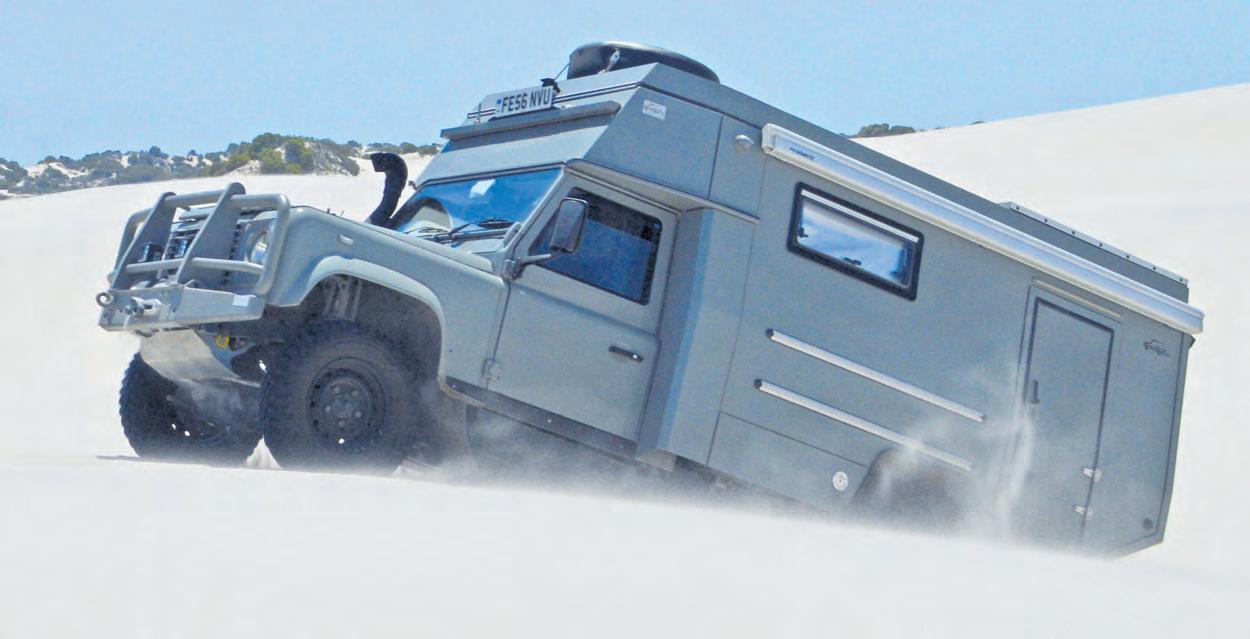

Breaking through the crust of a salt pan, when there’s nothing to winch off and you’re out in the wilderness, is a serious situation. It took hours of digging to free the 130 – and even then, it came out on the end of two kinetic ropes attached to another truck which happened to pass by
sandy recovery kit and headed for the Skeleton Coast National Park.
Entry and exit times are controlled at the park gate, and you need a permit to enter (it’s free, but you still need one). Thankfully, despite spending four-plus hours digging out the car we were still in time. We continued north, stopping on occasion to see the various wrecks – including one of an onshore oil rig which turned out to be home to some jackal which were remarkably close by the time we noticed each other. I’m not sure who was more surprised when they crawled out from one of the tanks but having looked at us they just meandered off behind some dunes.
We found a great wild camp by a small water hole, where there were lots of signs that large animals had used it recently. Nothing very exciting came past while we were there, but we did have our first tin of haggis that night.
The following day was a mission to travel the 300 kilometres or so towards the Anderson Gate at Etosha National Park. While we were happily cruising down one of the faster gravel roads, there was a loud exclamation from the passenger seat: ‘GIRAFFE!’
As you might have guessed, Claire had spotted the first giraffe of the trip, ambling alongside the road and grazing in the treetops.
I came to a halt quicker than normal and prepared for the necessary U-turn. We pulled up just next to where Claire had seen it, and sure enough there was a giraffe poking its head out and looking at us, as if it was just as curious about us as we were about it.
Our camp site just outside Etosha had car washing facilities. Well, a hose, but that let me rinse the worst of the sand and salt pans off the Land Rover – which, after its recent brush with gravity, was welcome.
As a general rule, the early mornings were cool until the sun rose above the horizon. From then on, our goal was to be driving, which would afford us the luxury of air conditioning – though despite this, temperatures inside the vehicle were seldom below 33°C.
On the way from the Skeleton Coast to Etosha, it became abundantly clear
how diverse this landscape was. We had encountered a vast salt pan, huge red sand dunes, barren desert and finally, on reaching Etosha, a green forest of mopare trees. This was all in the space of around 400 kilometres.
The following day, we woke early to make the best of our time inside Etosha National Park. And it didn’t disappoint. We bumped into a pride of lions quite early and the animals just kept coming – lots of giraffes, zebra, wildebeest, more springboks than you could count, a couple of rhinos, a spotted hyena, plenty of elephants, another jackal and another pair of lions. Not forgetting the many birds, most of which we had never seen before.
We spent two nights at the same camp site in Windhoek. The first night, we were extravagant and headed out to Joe’s Beerhouse on the recommendation of a friend, where we ate our body weight in African meat. Springbok, oryx, zebra and kudu, all very nice and a welcome rest from cooking.
The following morning we were up at a reasonable time with the car prepared and ready to head to Botswana. We hit the road and headed east.
Setting off from Windhoek, we crossed into Botswana at the Mamuno border post. The formalities were easy enough and we paid just £23.10 for road tax, insurance and so on. We made good time, in our own slow fashion, covered some 570 kilometres before rolling in to a campsite which was basic but, being community run and operated, meant our fee was staying in the local community. A nice contrast to the rinsing we had walked away from in Sossusvlei.
In the town of Maun, we got two baskets of laundry done for £14.11 (realities of life on the road, there) then headed into the National Park Office to buy our permit for Moremi National Park. Then we went shopping for food and beer.
It was here that Claire found the walk-in beer fridge, and it took some persuasion for her to walk back out again. This had nothing to do with any

fondness for beer and everything to do with it being a large chilled room in a country where the average daily temperature ranges from 35-40°C. After reading a few reviews, we elected for a basic campsite just north of Maun. The reviews were accurate: the showers were old, grubby and full of mosquitos, the dish washing area had a black layer of gunge in the bottom of the sinks and to top it off there was a gigantic sand coloured spider the size of my palm running around the place. On the plus side, the pitches were under shade and it had a small pool, as well as working wi-fi. And it was cheap.
The following morning, we were up at the crack of dawn to make the most of our time in the Okavango Delta. Moremi National Park couldn’t be more different from Etosha, with small, narrow tracks between trees and bushes, soft sand and only occasional poor signs to give you some idea of where you are. It would be very easy to get lost – not least because it was very quiet and we only saw five or six other vehicles all day.
The landscape has definitely been scarred by the elephants grazing,

with a lot of trees pushed over and stripped bare. We were visiting at a time when the rains had not yet come and vast parts of the Okavango Delta were still dry, but we did find several elephants playing in water pools, we parked up and watched them for a while. At this point we had a family of elephants cross in front of the camper to get to the water, only for the leader of the group to take exception to our presence and some straight for us with ears flapping. That certainly got the heart racing… We remained still with the Land Rover’s engine off and thankfully he turned and walked away.
We also saw zebras, giraffes and hippos (a favourite of mine) that day, though we pushed our luck a bit and ended up leaving just before the park closed. Driving after dark is not advisable in African due to the likelihood of encountering animals and people on the roads, so that was a bit of a lesson learned.
It had been a long day, and the following one was a bit of a slow start. We headed back to Maun to collect fuel and essential supplies; no further beer fridge incidents to report this time, even though this was our hottest day so far with the thermometer hitting 45°C.
Continuing east for Nxai Pan National Park, we found ourselves a bush camp for the night – only to be woken at 2am by a herd of elephants marching past en route to the nearby waterhole. They went straight through and over any trees that happened to be in the way… I’m glad we weren’t!
Visiting the Nxai Pan and Makgadikgadi Pan national parks wasn’t quite as bountiful an experience as we had
hoped. We saw a few animals that had become commonplace, along with a couple of new ones – one a particular type of monkey and the other, several families of vultures.
The reason for this was that there were more dead animals here than we have seen in any other park. On speaking to a Wildlife Ranger, our suspicions were confirmed that at this time of year, the animals are rooting around in the dirt for water and food – which gives rise to more cases of anthrax. If you’ve ever smelt a rotting deer, imagine the assault on the nostrils you get when it’s elephants. It’s a feast for the vultures though, and such is the circle of life (cue Lion King music).
The lack of wildlife was made up for by the scenery, however, with blue and green salt pans and huge Baobab trees. But by now we had decided that while Botswana was nice, it was time to move on.
As our national poet Rabbie Burns once said, however, the best laid schemes o’ mice an’ men gang aft aglae. We had planned on travelling further into Africa, but all of a sudden that would have been against medical advice. We had discovered that Claire was pregnant – which meant malaria zones were a big no-no. So instead, having seen the north of Botswana we decided to head south and make our way back towards South Africa across the Central Kalahari.
It took a day to reach the park gate, following which we carried on a few more miles before setting up camp for the night. Another 12 hours or so would see us across the desert; we drove through a thunderstorm around midday, which was exciting, but saw precisely no other vehicles the whole was. When
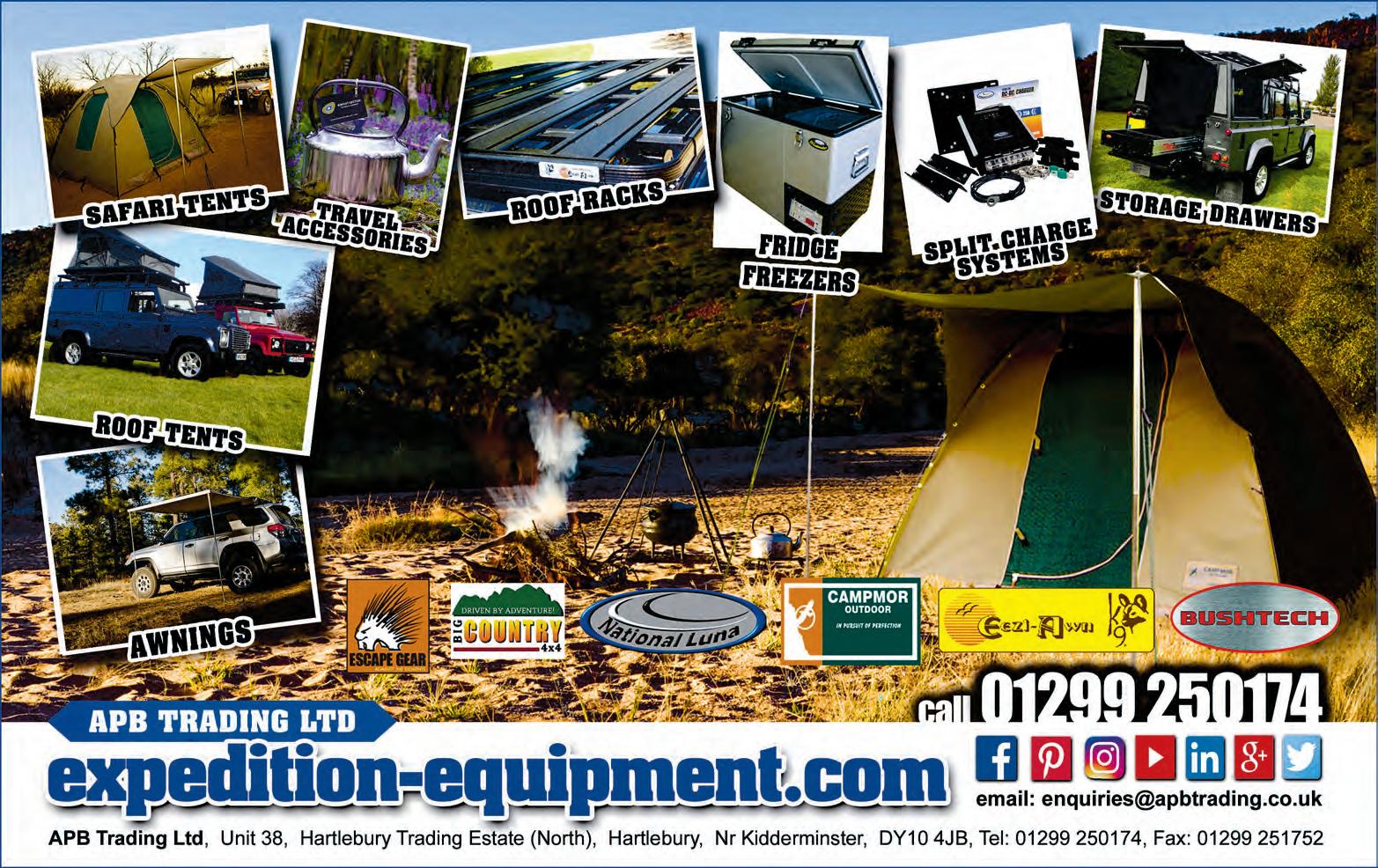













we reached the other side, we had covered just less than 500 kilometres without any tarmac.
We shared that night’s camp site with some ‘backpacker’ tours whose organisers had arranged some evening entertainment in the form of traditional Bushman music and dancing. Quite a lucky fluke, that. The following evening, by contrast, after a blessed day of smooth tarmac, our bush camp entertainment was a spectacular electrical storm in the distance that went on for hour after hour.
Another huge contrast awaited us over the next couple of days, when the camp site we checked into in the Botswanan capital of Gaborone also happened to be part of a water park. We had a rest day here, doing laundry
and checking over the Land Rover, then with all that taken care of we asked the staff if it was okay to use the pool. They were happy with that, so we spent several hours in there cooling off – a very welcome experience, albeit quite a strange one as we had the entire place to ourselves. Well, ourselves and five lions in a nearby enclosure…
The following day, the last of our Botswanan money went on brimming the 130’s tanks. Fuel is nice and cheap here (about half what it costs in Britain), so that was a win-win and a nice way to say farewell to the country before heading for the South African border. It was the easiest and most chilled-out crossing we could have hoped for, with very friendly officials on both sides.
Our hasty change of plans meant we had plenty of time to explore the coast on our way back to Cape Town. First stop was a park where Claire had arranged to go and visit some lions, which was an interesting experience. We started off playing with a group of cubs, who were around three months old and of course behaved exactly as you would expect from an overgrown kitten. They were very active and playful, although they did need to be reminded of boundaries when they viciously attacked my arm. Little lions have big teeth…
The next couple of days saw us covering around 1000 kilometres en route for the Dolphin Coast, where we found a very nice pitch next to the Indian Ocean. This particular stint proved that with its auxiliary tanks, the Defender would happily manage more than 900 miles between fill ups. With a quarter of a tank left on the gauge, we could theoretically have got another hundred or so out of it, but running out of fuel is not the most comfortable of ideas in Africa and we’d already shown that we were averaging a very decent 22mpg, so that was enough.
Talking of fill-ups, we had anticipated being away from home for St Andrew’s Day and had packed the Defender accordingly with haggis. We spent the night in Port Elizabeth, along with a bottle of whisky bought in South Africa which Claire enjoyed watching me sample while she had mineral water. We still had a week or so left before our flights home, so having driven
down to the most southerly point of Africa at Cape Agulhas and headed round the famous Garden Route tourist trail back to Cape Town, we spent a bit of time doing things like eating in nice restaurants, diving, kitesurfing, relaxing by the coast and eating in nice restaurants again. If you’re ever down that way, I can’t recommend The Foodbarn highly enough. It was founded by a French chef called Franck Dangereux – which, yes, really does translate as Frank Dangerous and that alone is reason enough to want to go there, but also without question it served the best food we ate on the entire trip. Both times, in fact – that’s how good it was.
We also found another national park called Atlantis Dunes, a stunning landscape where you can get permits to drive the dunes and see the scenery. Naturally, this was an opportunity not to be missed. I’m happy to report we didn’t get stuck or damage the car, and we also met a very friendly bunch of folks who gave us some suggestions for other things to do in Cape Town. One of them also gave us a lift in his very capable Toyota FJ when we found dunes that were either too soft or too tight for us to tackle in the 130.
Back in Cape Town, we ticked off some more touristy things before getting down to business and making sure the Land Rover was washed, cleaned out and its oil changed ready to be loaded into a container and sent
back to the UK. We had already spoken to Duncan at African Overlanders, who was looking after the shipping for us, and he had arranged a container share for January.
Did we feel a little crestfallen that our big trip hadn’t panned out the way we intended? Not at all, no. The reason for changing our plans was as wonderful as they come, obviously – and besides the even bigger trip we now had ahead of us, we’d learnt a lot about Africa and a little about travelling, and we’d forgotten what winter is like in the UK.
Most of all, our 130 did an excellent job of being both our home and our transport. It endured thousands of kilometres on truly awful roads, crossed the Kalahari desert, battled through ferocious thunderstorms, endured the blistering heat of summer in Botswana and dealt with a diet of rather suspect fuel in Namibia. We travelled just short of 13,000 kilometres (8000 miles) with no drama, no damage and no breakages, unless you count one single failed relay, and only got stuck once due entirely to operator error.
Would we have enjoyed the expedition as much in the roof-tented 110 that was our previous travel wagon? Well, now we have a young family our next 4x4 is probably the answer to that question. Our children will be seeing the world with us from aboard an 18-ton Scania 4x4 crewcab – and yes, it will have a camper conversion. The 130 may not have carried us as far as we intended, but it certainly showed us the road ahead.

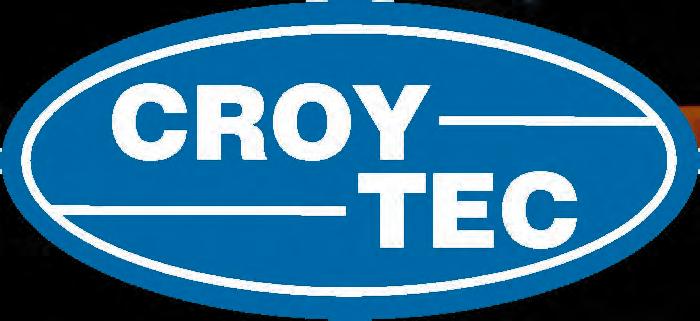




We give form to our components by machining detail into them with chamfered edges and rounded corners, under cuts, engraving and much more. We take time with care and attention to detail to ensure we deliver quality products. Our products have become a feature to many Land Rovers worldwide.



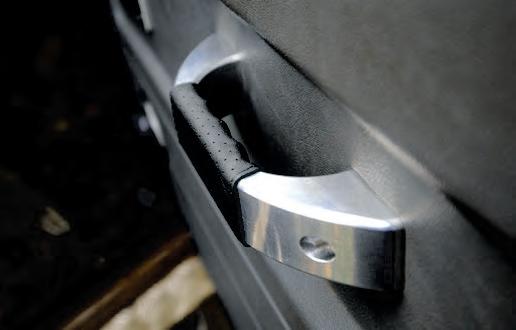
Alongside our aluminium interior and exterior trim range, our Special Order Service offers leather trim which can be designed to your requirements incorporating our colour anodised parts, to give you the ultimate Enhanced by Croytec Defender.

























all Land Rovers. Its engineering and design give it real charisma, but parts aren’t readily available. Restoration projects require deep pockets, but see it through and the result will be worth mega bucks.
The Series I, particularly in its 80” guise, is the most sought-after of

Gone are the days where you could use a Series I as an actual Land Rover. Because with restored examples changing hands
£5000-£85,000
for millionaire money, preservation is the aim of the game.
The earlier the vehicle, the more it will be worth. The sky’s the limit – but can you really put a price on such an icon?
Pros: Heritage, charm, a true classic, the original Land Rover Cons: Availability of parts, price tag on early 80s Series I (1948-1958)
Cons: Not yet as desirable as the earlier Series models Series III (1971-1985)
terms, keeping the same 2.25-litre engines throughout the length of its production run. In 1980, the engines switched to a more durable five-bearing crank rather than the old threebearing setup. The transmission also received syncromesh on all forward gears to make it easier to live with.
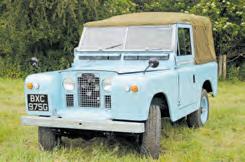
£2500-£35,000
They still carry the simplicity of earlier Land Rovers, but the Series III remains the most affordable way into owning a leafer.
Pros: Most affordable route into Series ownership. Still has the Series pedigree. Parts still widely available
Lightweight (1968-1984) £3500-£22,000

These military vehicles can easily be distinguished from regular

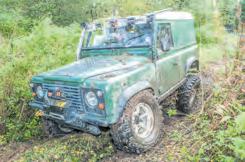
Land Rovers. To mimic the civvy Series machines, the Series III model built from 1972 onwards, also had its headlights switched out to the wings.
Lightweights add an extra dimension to owning a Land Rover. Their military history and details mean you get a truck with more stories to tell – and that stands
Early
These
Rovers
coilsprung suspension, new engines and a world-beating level of rugged off-road capability.
out from the crowd. They’re a rare breed, though – so if you’ve got one, it’s worth keeping hold of.
Pros: Not like all the other Land Rovers out there. Military background. Lovely 2.25 petrol Cons: Appearance isn’t to everyone’s taste. Exclusivity over regular models means they command a price premium
Don’t be fooled by high prices. Values have dropped in the last two years, and only a real rarity in pristine nick is worth the money that used to be commonplace.
Pros: Excellent parts availability. Easy to work on. Unlimited potential for mods and restos
much of that early charm. Prices seem to have peaked now, however they still remain strong for good examples.
A 2.25 petrol 88” would be our pick, as the diesel engines were underpowered and rather noisy.
refinement. While the engines have excellent longevity, they need to have been maintained properly. Be thorough in your checks, both under the bonnet and underneath the body.
refinement, but this is seen by many experts as the best Defender of them all.
The LT77 gearbox in the 200 Tdi is more truck-like than the later R380, and these vehicles didn’t come with bling. Just be sure it’s an original Tdi you’re getting, not an old Discovery conversion.
Pros: The perfect combination of tradition and modernity
Cons: Lots of horrible and/or deceptive ones around
Cons: Bulkheads and chassis rot, springs prone to seizing Series
The Series II/IIA has a wider stance than its predecessor and adds an extra (thin) layer of

rarity – with all the cachet, pride and immense awkwardness that comes with this status.
By ‘rare’, we’re talking about less than 2500 Series IIA FCs in total. And they tended to have a very hard life, so not many have survived to tell the tale.
Pros: A sound investment to restore – and enjoy
Pros: A Land Rover like no other, if that’s what you want Cons: Especially brutal to drive, and to find parts Series IIA/IIB FC (1962-1971) £2500-£15,000
Forward-Control models differed from everyday Series IIs by

Only ever
the time came for demob. They were flogged off at very low prices and turned into off-road toys –not something you’d do with one today, given the rarity and classic value they’ve taken on.
having heavy-duty ENV axles, but engine-wise they had the familiar 2.25 petrol and diesel lumps. So, don’t expect performance – but do expect to be given an ‘interesting’ time in the workshop…
£7500-£26,000
Compared to the IIA/IIB FC, the 101 is more fun thanks to its V8 engine. It’s still a military tool, though – some still have fixtures and fittings from their Army life, which adds interest. This is a vehicle for enthusiasts, though, with costs that are sky-high even by Land Rover standards. Pros: Master of the road. Lovely V8 soundtrack. Everybody who sees one loves it Cons: Monumental running costs. Expensive to buy, too

The 127
motor. It’s popular for homebrewed overland conversions, too. Almost all 127s have had an engine conversion by now, too. Lots to be wary of, then – but it’s a hell of a lot for your money. Pros: Enormous size means
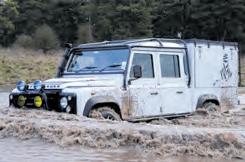
work truck tend to go for a later 130, so the 127 is more of an enthusiast’s


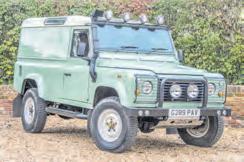
The 300 Tdi engine is very different to the 200 unit it replaced, though
the two are related. It’s much more refined and smoother to drive, though there are more electronics involved so later versions in particular are less of a DIY fix.
The arrival of the 300 Tdi also brought with it the R380 gearbox. This used to have a terrible reputation for relability, but most have been put right by now and they’ve
£3500-£40,000
become sought after for their light clutch and better shift action.
It was during the Tdi era that Defenders started getting things like alloys, too. You might even find one that’s not been off-road… Pros: Strength and simplicity. Perhaps the definitive Defender Cons: Sure to be very different to when it left the factory
TDCi (2007-2016) £6500-£275,000

The last Defenders gained modern 2.4 and 2.2 TDCi engines and


smooth six-speed gearboxes, They still had phenomenal off-road ability and were even okay to sit in. Famously, this was the Defender that actually had a dashboard You can find special editions and boutique conversions to TDCi models that cost obscene amounts of money. You will pay a premium for any these late
It’s also a notable classic in its own way, as it heralded the start of the company’s modern era. It has its issues, though. The viscous coupling is expensive to replace and can be upset simply by running mismatched tyres.
The 1.8 petrol used to be notorious for head gasket failures. Today’s replacements are much
are people who do just that, preferring to invest new-car money in a restoration than spending it on a current model.
It’s a smart policy, too. An early two-door can cost mega money, but any Classic will appreciate in value if kept in good condition –and sought-after rarities like the CSK and LSE can be a gold mine.

a strong performer. It does lend itself to being tuned though, so watch out for abused ones and knackered examples that have been pushed beyond the limit.
As with all Defenders, you’ll need a rear crossmember sooner or later – or even a new chassis.
still be a DIY machine. Parts are in plentiful supply, as is specialist knowledge – and it’s one of the best Land Rovers ever.
Defenders, however the era of skyrocketing prices seems to be over and TDCis have dropped further in value than the Td5. So a good 2.2. could now be quite a shrewd investment
Pros: Efficiency, creature comforts, off-road prowess
Cons: Price, electronics, TDCi engine is unloved
more robust, but a late diesel is your best bet. Even these can go calamitously wrong, though. This was a more complex car than it needed to be, and buying one for sweeties now doesn’t change that.
Pros: Cheap to buy, no big rust issues, surprisingly able off-road Cons: All sorts of things can go wrong, some very expensively
An awful lot of Rangeys have been neglected and/or abused, and you can still buy they cheap. But if you’ve got the skills, and access to parts, restoring one would be the ultimate hobby that pays.
Pros: Most usable classic Land Rover, V8 power, ride quality
Cons: Rust, availability of parts for early models
Range Rover (2002-12) £2200-£24,000
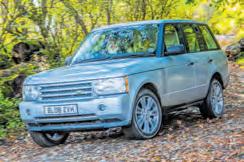
The Mk3 Range Rover hit new
of luxury and was more reliable than the P38. It’ll still cost a lot to run, however, and drivetrain faults and underbody corrosion are not unknown.

The TDV8 engine is sublime, but you’ll pay more to get one –especially the 4.4, though the 3.6 has all the power you need. The V8 petrol, on the other hand, is temptingly cheap. Guess why…
This isn’t a DIY motor, but it certainly is a Range Rover, with brilliant off-road and towing skills. It relies a lot on electronics, but they work wonders – and the deepdown engineering is very robust.
Pros: Great off-road, luxury, image, TDV8 powerplants
Cons: Very complex. Huge running costs
The Td5 engine is arguably Land Rover’s most reliable unit and it’s
Despite having more electronics than the Tdi, a Td5 Defender can
(2020-on)
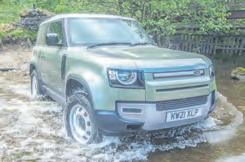
If the subject of the new Defender comes up in enthusiast circles, try
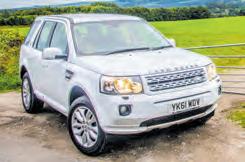
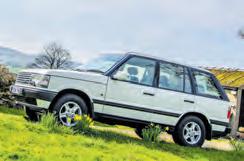

The fourth-gen Range Rover is a majestic 4x4. All the engines in the
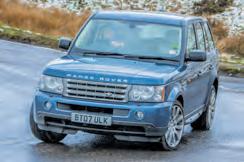
to steer it away on to something safer. Like Brexit, for example.
Much as it may infuriate purists, however, the Defender is actually a very wonderful thing. It’s kind of like an old one, only with space, comfort and equipment.
The big difference is that you can’t work on it yourself. This goes for maintenance and, crucially,
it replaced. It’s a refined and affordable SUV with a strong engine, good equipment and a decent level of practicality.
It’s become one of the most reliable Land Rovers out there, too.
But do be aware of the rear diff and Haldex unit for costly outlays.
The 2.2-litre diesel engine is a strong performer, though for a
own, even today. The problem is that they’re very complex and very, very good at going wrong. Air suspension failure is the norm. Head gaskets can let go. Electronics are laughably flaky. And parts can cost the earth – as will the labour bills. Perhaps worst of all, nowadays it’s very hard to find one you can be sure hasn’t
range supply copious amounts of power, and its road manners are absolutely impeccable.
It’s startlingly capable off-road, too, even if getting one muddy would feel like bad form. Most that leave the tarmac probably do so only when their owners are in the mood to blow some grouse out of the sky.
a supreme off-roader as well as
Pros: Off-road capability, power, overall reliability. Very well suited to being modified
Cons: Rear chassis, premium prices, monstrous road tax on later vehicles Defender Td5 (1998-2007) £3000-£35,000
£45,000-£185,000
making modifications – a market Land Rover wants to take back and have for itself. It won’t hold its value long-term the way an original-shaper does, either. But this is still a superb vehicle.
Pros: Comfort, capability, rugged fitness for purpose
Cons: Not cheap to buy. Lacks the old one’s basic charm
bargain search out one with the unpopular 3.2 petrol unit. Either way, it’s a fine SUV to drive. Prices have fallen since the production ended, too – £15,000 now gets you a late one on tiny miles.
Pros: Reliability, refinement, economy of diesel engine
Cons: Transmissions can wear quickly if used for towing
spent at least part of its life being worked on by idiots Still, you’ll get a classy motor with proper off-road and towing skills. It’s becoming a classic, too, and prices are still tiny considering everything you get.
Pros: Luxury, price, a Land Rover that doesn’t rust Cons: Electrics. Be very afraid
Inside, the Range Rover’s cabin is superb, with sumptuous trim and cutting-edge equipment. Prices are, of course, as immense as the vehicle itself. But if you can afford it, so too is the presence a Rangey will give you.
Pros: Class, luxury, engines, vast all-round capability
Cons: Price


The second-generation Range Rover Sport is 400kg lighter than

the original, meaning it’s almost economical to run. It feels really nimble and agile on the road, too, and it comes with a range of engines giving it a brisk turn of pace.
Some won’t like the flamboyant posture, while others will love it. Either way, inside the cabin it’s very nearly as luxurious as the full-house Range Rover.
£13,500-£65,000
If you can afford the SVR model, you’ve got a super-SUV with rap star image. In every case, though, running costs will be vast. Parts don’t get any cheaper because you bought it second-hand…
Pros: Performance, refinement, handling, glorious interior
Cons: Marmite image. Pricey to buy and run
Range Rover Sport (2022-on)

Hilariously, this is what counts as the affordable way in to owning a
new Range Rover. The Sport is less about being chauffeur driven and more about lording it over other aspirational school runners, but once again it’ll be lovely to drive.
Like the full fat Range Rover (a phrase which has never felt more appropriate), the Sport is available with an old-school V8 engine that gives you racecar performance in
£80,500-£145,000
return for NASA-level emissions. Most UK customers with opt for an altogether healthier plug-in hybrid, but they’ll still get a vehicle that’s brutally fast a well as being able to do the normal Range Rover stuff.
Pros: Smooth, refined, comfy… and game for a laugh, too
Cons: Still hasn’t quite shed its proceeds-of-crime image
When the Evoque was launched, it signalled JLR’s intent on hitting

and
Evoque (2011-19) £4500-£31,000
the masses. Given that it was the company’s fastest-selling vehicle, they clearly hit the brief, even if it wasn’t for the traditional Land Rover owner.
It’s actually still a capable thing off-tarmac – but it’s definitely more at home on the road. Nevertheless, it is economical by Land Rover standards and
because of its particularly handsome exterior. It’s based upon the same architecture as the Jaguar F-Pace but has greater off-road ability and is available with a wide choice of engines, most of which combine good economy with usable everyday performance.
because there are so many out there, used prices are tempting. There’s a Convertible model, too, as well as three and five-door tin-tops. We say stick to the latter, and be sure to get one with 4WD.
Cons: Cramped rear seats, not as practical as a Disco Sport Range
Pros: Economy, handling, iconic concept-car image

Evoque has adopted a similiar back end to the larger Velar. It’s not just the exterior that mimics the looks of the larger vehicle, however, as the Evoque has gained the latest Touch Pro Duo tech and a hike in quality.
The main highlight of the new Evoque is the fact the majority of the range is made up of mild
hybrids, available with diesel and petrol engines combining to an electric motor. Only the base D150 Evoque escapes the electrification, and we’d avoid it as it doesn’t have four-wheel drive.
Pros: Feels like a proper Range Rover inside
Cons: Petrol engine is poor on fuel economy, even as a hybrid
it came out. It was very much designed to be a trend setter. But is there a whiff of style over substance? Well, it’s a very good SUV. But you don’t half pay a premium for those suave looks...
Pros: Stylish design, chic cabin, excellent tech features
Cons: Feels like an indulgence, especially at such a high price Range Rover Velar (2017-on) £22,500-£85,000
The interior was Land Rover’s most advanced cabin yet when
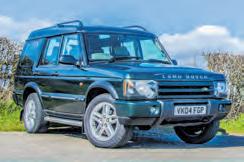
most most reliable units ever. It drives well, too – mated to a manual box it has more guts even than the V8 option, which is surprisingly bland but predictably thirsty. Whereas the Disco 1 was prone to body rust, the D2 is fine here. Instead, its chassis rots like a carrot, especially towards the back end. Also at the back, seven-seat


a Discovery in name only.
It’s a more practical proposition than the closely related Evoque, and you won’t need to live with the fear of Posh Spice jokes.
models had air-suspension, with all the horrors that brings.
Mainly, D2 owners will tell you about rogue electronics. And leaky sunroofs. They still love their trucks, though, which says a lot.
Pros: Td5 power and reliability, great all-rounder, lots of choice Cons: Chassis rust, electronics, leaky sunroofs, air suspension
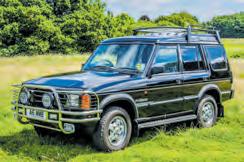
with the same 100” wheelbase and a slick body containing a spacious, flexible cabin. It was well equipped and refined, and it came with the wonderful Tdi engine.
There are some tidy deals to be had on late high-spec examples now – though if you do a
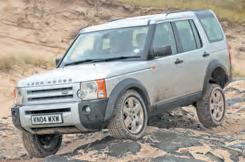
The Disco 3 is an astonishing allround vehicle.
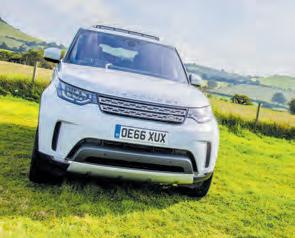
Over time, the Disco’s epic ability meant almost all of them were hammered at playdays. Lower body rust is a big killer, too. So it’s rare to find a good one now,
and capable off-road, genuinely luxurious and a giant of a tow truck, and as well as being able to seat seven adults it can be turned into a van with a totally flat rear load area.
But it was also astonishingly complex, and these days it has a reputation as a money pit. Air suspension and electronic
and when you do they tend to be priced with a lot of optimism. Very early ones in tip-top condition are full-on classics, too. For a sound one to own, we’d look for a tidy 300Tdi.
Pros: Price, practicality, parts availability. Epic off-road ability
Cons: The body rusts like it’s been doused in sea water Discovery (1989-1998) £800-£15,000
handbrakes are big sources of woe, cam belts are a body-off job to change and rust is becoming more of an issue. Get a good one, though, and it’s all the car you’ll ever need.
Pros: Good at everything. Lots of accessories available now
Cons: The phrase ‘money pit’ crops up time after time

after the first. That’s because once again, it’s related to the Evoque, which was ready for a full new model in 2019.
The Sport is a premium midsized SUV with seven seats and a decent level of off-road ability. It’s a massively popular choice for the school run – and, with the arrival




Series III Lightweight FFR (1971). 89,600 miles. 2.5 diesel. Overdrive, FWH, spare fuel can. New hood, water pump, 3-point seat belts. Immobiliser. Clansman whips. £13,000. Middleton, Leics. 07748 362892 06/25/001

Defender 110 (1987). Est 116,000 miles. Imported from Singapore and restored in 2018. Excellent bodywork and paint. 4C engine, Bluetooth stereo, Marshall speaker. £16,000. Bristol. 07799 338898 06/25/006
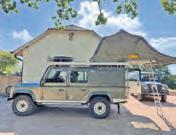


Series I 80” (1953). Correct 2.0 engine, gearbox and axles, first class chassis and bulkhead, great bodywork. Amazing patina, wonderful to drive. Restored in 90s and in 2015. £21,500. Macclesfield. 07843 281455 06/25/012
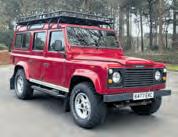
Defender 110 CSW (1993). 74,000 miles. 200Tdi. One-family vehicle. Always waxed, always fully maintained. Salvaged in 2015 with full respray plus SD rack and alloys. MOT Feb. £14,999. Bordon. 07789 760071 06/25/005
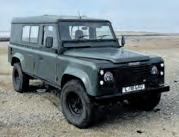

Series II 88” SW (1959). 2.5 diesel, Series III box professionally installed. Recent £10k recommission. Chassis professionally repaired, new brakes and electrics. New tyres, fresh repaint. £27,500. Bedworth. 07423 380179 06/25/008

Defender 110 300Tdi SW (1999). 131,000 miles. Ex-RAF. Solid original chassis and bulkhead, original engine and box. XS alloys, winch, snorkel +2” suspension, tent, diesel heater. £14,999. Dalton-in-Furness. 07841 668629 06/25/013
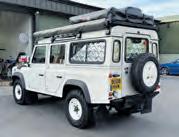

Series III 88” SW (1984). 7-seater. 300Tdi engine. Soli chassis. Bulkhead welded, new parabolic, shock absorbers, headlights, exhaust, seats. Can’t select low range. MOT Oct. £8750. Truro. 07595 893394 05/25/007

Defender 110 (1985). Ex-MOD. 2.5 n/a diesel recon military engine. Regularly waxed. PAS. New exhaust, diff, rad, screen, starter motor, water pump and more. FSH. MOT Sep. £5500. Chippenham. 07887 731381 06/25/014

Defender 110 Td5 HT (2000). 120,355 miles. 7.50 MTs. Standard and unmodified. Chequer plated sills and corners. Well worth looking at. Will be sold with full MOT and service. £11,995. Colne. 01282 861503 05/25/006




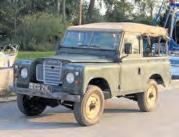


Defender 110 Utility CSW (1994). 147,555 miles. Extensive rebuild. Excellent chassis and bulkhead. Superwinch, 2” lift, HD rock sliders, snorkel, rack, awning. Full interior retrim. 35” BFGs. £30,000. Torquay. 07799 453416 06/25/011
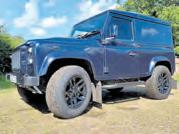

Range Rover 300Tdi (1996). 228,000 miles. Manual. Soft-dash, coil conversion. New tyres, starter, battery. Solid chassis and good body but multiple cosmetic issues. Year’s MOT. £4750. Willenhall. 07541 179237 06/25/007





Range Rover 4.6 HSE (2000). 99,300 miles. Bonatti Grey. Bosch electronics. New Bilstein air suspension, reprogrammed BECM, new rockers, faultless air-con. Exceptionally clean. £10,900. St Albans. 07974 764712 05/25/008

Discovery Commercial 3.0 SDV6 auto (2012). 146,000 miles. 2-seater. Leather, climate, heated seats, parking sensors, DAB, Bluetooth. Towbar fitted. Loire Blue. MOT Jan 26. £6500. Rochdale. 07989 012119 05/25/009








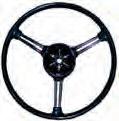
























































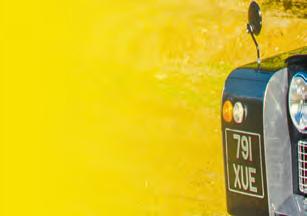

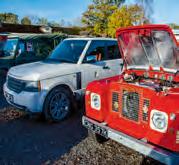











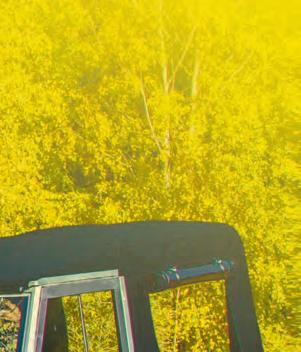




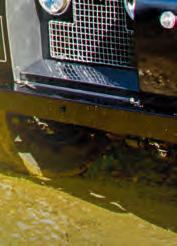

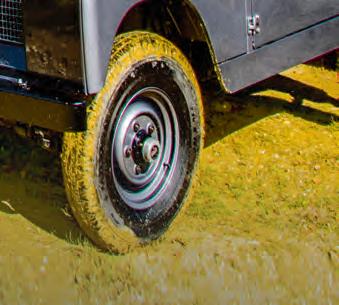

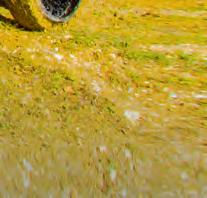




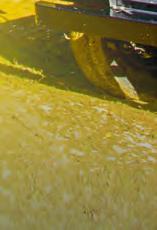










Born to be off road? Keep it that way with genuine parts from the Lucas Authentic Classic Range.
We offer replacement parts with Original Equipment pedigree for your classic Land Rover. With Lucas Classic parts, you can expect exact bolt-for-bolt fit and take pride in the knowledge that you have chosen a part of excellent quality that keeps your vehicle specification genuinely true to the original.
Fit parts from the Lucas Authentic Classic Range. Because a true classic deserves to live forever.